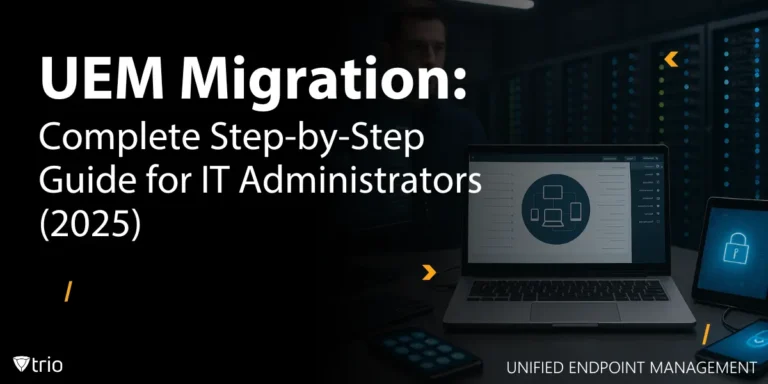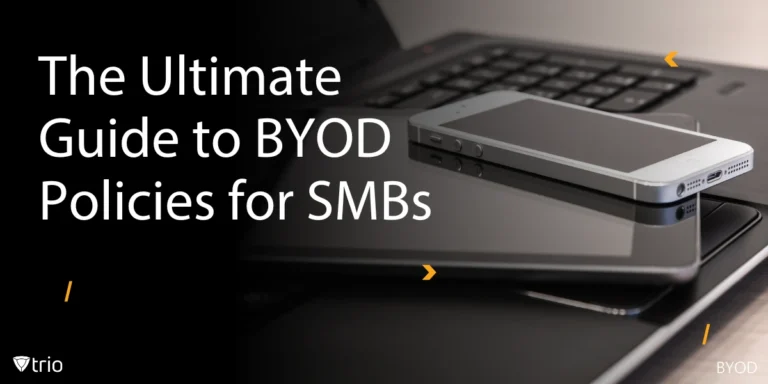As cyber threats continue to evolve and become more sophisticated, implementing robust security measures is crucial to protect valuable assets from unauthorized access and potential breaches. One fundamental aspect of cybersecurity that plays a pivotal role in fortifying digital defenses is access control. By the end of this article, you will have a thorough understanding of access control types and be equipped with the knowledge to make informed decisions about implementing robust security measures within your organization.
Defining Access Control in Cybersecurity
Access control in cybersecurity refers to the comprehensive set of policies, procedures, and technologies designed to regulate and manage access to an organization's digital resources, systems, and information. It serves as a critical line of defense against unauthorized access, data breaches, and other security threats that could compromise the confidentiality, integrity, and availability of sensitive information.
At its core, access control is about ensuring that the right individuals have the appropriate level of access to the resources they need to perform their job functions, while simultaneously preventing unauthorized users from gaining entry to restricted areas or sensitive data. This delicate balance between accessibility and security is crucial for maintaining operational efficiency without compromising the organization's overall security posture.
Components of Access Control
To fully grasp the concept of access control, it's essential to understand its key components:
- Authentication: This process verifies the identity of a user or system attempting to access a resource. Common authentication methods include passwords, biometrics, smart cards, and multi-factor authentication (MFA).
- Authorization: Once a user's identity is verified, authorization determines what actions they are permitted to perform and which resources they can access based on their assigned privileges.
- Auditing: This involves tracking and recording user activities and access attempts to maintain accountability and facilitate forensic analysis in case of security incidents.
Access Control Policies: These are the rules and guidelines that define how access to resources should be granted or restricted based on various factors such as user roles, security clearance levels, or specific conditions.

The Four Primary Types of Access Control in Security
Access control systems can be broadly categorized into four main types, each with its own unique characteristics, strengths, and applications. Understanding these different approaches is crucial for organizations to select and implement the most appropriate access control strategy that aligns with their security requirements and operational needs.
Let's explore each of these access control types with examples in detail. Access control types include:
1. Discretionary Access Control (DAC)
Discretionary Access Control (DAC) is one of the most flexible and widely used access control models. In a DAC system, the owner or creator of a resource has the discretion to determine who can access it and what level of permissions they should have.
Key Features of DAC:
- User-centric approach: Resource owners have full control over access rights.
- Granular permissions: Access can be granted at various levels (read, write, execute, etc.).
- Easily modifiable: Permissions can be changed quickly by the resource owner.
Examples of DAC in Action:
- File System Permissions: In operating systems like Windows or Linux, users can set read, write, or execute permissions for files and folders they own.
- Shared Documents: When sharing a document on platforms like Google Drive or Dropbox, the owner can specify who can view, edit, or comment on the file.
- Social Media Privacy Settings: Users can control who can see their posts, photos, or personal information on social networking sites.
Advantages of DAC:
- Flexibility: Allows for quick and easy modification of access rights.
- User empowerment: Gives resource owners direct control over their data.
- Simplicity: Easy to understand and implement for small-scale systems.
Limitations of DAC:
- Potential for oversharing: Users may accidentally grant excessive permissions.
- Lack of centralized control: Difficult to manage in large organizations.
- Vulnerability to insider threats: Malicious users with ownership rights can compromise security.
2. Mandatory Access Control (MAC)
Mandatory Access Control (MAC) is a more rigid and centralized approach to access control. In a MAC system, access decisions are made based on predefined security policies set by system administrators, rather than individual resource owners.
Key Features of MAC:
- Policy-driven: Access is determined by system-wide security policies.
- Hierarchical structure: Resources and users are assigned security levels or classifications.
- Strict enforcement: Users cannot override or modify access controls.
Examples of MAC in Action:
- Military Systems: Classified information is accessible only to personnel with appropriate security clearance levels.
- Government Agencies: Access to sensitive data is restricted based on predefined security classifications and need-to-know basis.
- Healthcare Systems: Patient records are accessible only to authorized medical personnel based on their roles and responsibilities.
Advantages of MAC:
- High security: Provides strong protection against unauthorized access and data leaks.
- Centralized control: Easier to manage and enforce consistent security policies across the organization.
- Compliance-friendly: Aligns well with regulatory requirements in highly regulated industries.
Limitations of MAC:
- Reduced flexibility: Can be overly restrictive and hinder productivity in dynamic environments.
- Complex implementation: Requires careful planning and ongoing maintenance of security policies.
- Resource-intensive: May require significant administrative overhead to manage and update access rules.
3. Role-Based Access Control (RBAC)
Role-Based Access Control (RBAC) is a widely adopted access control model that assigns permissions based on predefined roles within an organization. Users are granted access rights according to their job functions or responsibilities.
Key Features of RBAC:
- Role-centric approach: Access rights are associated with roles rather than individual users.
- Hierarchical structure: Roles can inherit permissions from other roles.
- Scalability: Easily adaptable to organizational changes and growth.
Examples of RBAC in Action:
- Enterprise Resource Planning (ERP) Systems: Different departments (e.g., HR, Finance, IT) have specific roles with predefined access rights to relevant modules.
- Healthcare Information Systems: Doctors, nurses, and administrative staff have distinct roles with appropriate access to patient records and medical data.
- E-commerce Platforms: Customer service representatives, inventory managers, and system administrators have different roles with specific permissions.
Advantages of RBAC:
- Simplified administration: Easier to manage access rights for large numbers of users.
- Improved security: Reduces the risk of excessive permissions through principle of least privilege.
- Compliance support: Facilitates auditing and reporting for regulatory compliance.
Limitations of RBAC:
- Potential for role explosion: Large organizations may end up with numerous roles, making management complex.
- Lack of fine-grained control: May not be suitable for scenarios requiring highly specific access permissions.
- Difficulty in handling exceptions: Users with unique access needs may require custom roles or exceptions.
4. Rule-Based Access Control
Rule-Based Access Control is a dynamic access control model that uses predefined rules or conditions to determine access rights. These rules can be based on various factors such as time, location, device type, or other contextual information.
Key Features of Rule-Based Access Control:
- Context-aware: Access decisions are made based on specific conditions or scenarios.
- Dynamic permissions: Access rights can change in real time based on rule evaluation.
- Flexible policy enforcement: Allows for complex access control scenarios.
Examples of Rule-Based Access Control in Action:
- Time-based Access: Restricting access to certain systems or resources outside of business hours.
- Location-based Access: Granting access to sensitive data only when users are physically present in the office.
- Device-based Access: Allowing access to corporate resources only from company-issued devices or through specific security protocols.
Advantages of Rule-Based Access Control:
- Granular control: Enables fine-tuned access policies based on various conditions.
- Adaptability: Can accommodate complex and changing access requirements.
- Enhanced security: Provides an additional layer of protection by considering contextual factors.
Limitations of Rule-Based Access Control:
- Complexity: Designing and maintaining complex rule sets can be challenging.
- Performance impact: Evaluating multiple rules in real-time may affect system performance.
- Potential for conflicts: Overlapping or contradictory rules may lead to unintended access issues.
The Role of Trio MDM in Enhancing Access Control
Organizations face numerous challenges in implementing and managing effective access control systems. Trio MDM, our cutting-edge Mobile Device Management solution, offers a comprehensive approach to addressing these challenges and enhancing overall access control for mobile devices and applications.
How Trio MDM Strengthens Access Control
- Centralized Device Management: Trio MDM provides a centralized platform for managing all mobile devices within an organization, allowing IT administrators to enforce consistent access control policies across the entire mobile fleet.
- Granular Policy Controls: With Trio MDM, organizations can implement fine-grained access control policies based on various factors such as device type, operating system, user role, and location.
- Secure Container Technology: Trio MDM utilizes secure container technology to separate corporate and personal data on mobile devices, ensuring that sensitive corporate information remains protected and accessible only to authorized users.
- Multi-Factor Authentication: Our solution supports various multi-factor authentication methods, including biometrics, hardware tokens, and push notifications, to provide an additional layer of security for accessing corporate resources.
- Remote Wipe and Lock: In case of device loss or theft, Trio MDM enables administrators to remotely wipe corporate data or lock the device, preventing unauthorized access to sensitive information.
- Application-Level Access Control: Trio MDM allows organizations to control access to specific applications based on user roles and permissions, ensuring that employees can only access the resources necessary for their job functions.
- Real-Time Monitoring and Reporting: Our solution provides comprehensive monitoring and reporting capabilities, allowing organizations to track device access patterns, detect anomalies, and generate compliance reports.
- Integration with Existing IAM Systems: Trio MDM seamlessly integrates with existing Identity and Access Management (IAM) systems, enabling organizations to extend their access control policies to mobile devices and applications.
- Automated Compliance Enforcement: With Trio MDM, organizations can automatically enforce compliance with industry regulations and internal policies by restricting access to non-compliant devices or users.
- Secure Content Distribution: Our solution enables secure distribution of corporate content to authorized users, ensuring that sensitive documents and files are only accessible to those with appropriate permissions.
We invite you to experience the power of Trio MDM in strengthening your organization's access control strategy. Start your free demo today and discover how our solution can help you overcome access control challenges and protect your valuable digital assets in an increasingly mobile-centric world.
Conclusion: Embracing a Holistic Approach to Access Control
As we've explored throughout this comprehensive guide, access control plays a pivotal role in safeguarding an organization's digital assets and maintaining a robust security posture. The four primary access control types examples each offer unique advantages and are suited to different organizational needs and security requirements.
Implementing effective access control is not without its challenges, ranging from balancing security with usability to managing access in complex, multi-cloud environments. However, by adopting best practices, leveraging advanced technologies, and maintaining a proactive approach to security, organizations can overcome these obstacles and build resilient access control systems that protect their valuable assets while supporting operational efficiency.
Get Ahead of the Curve
Every organization today needs a solution to automate time-consuming tasks and strengthen security.
Without the right tools, manual processes drain resources and leave gaps in protection. Trio MDM is designed to solve this problem, automating key tasks, boosting security, and ensuring compliance with ease.
Don't let inefficiencies hold you back. Learn how Trio MDM can revolutionize your IT operations or request a free trial today!





